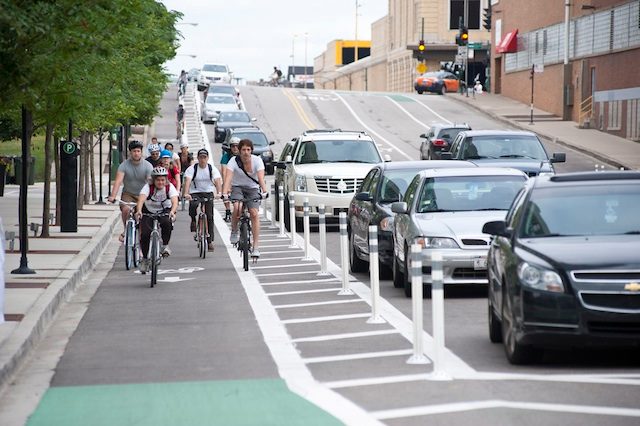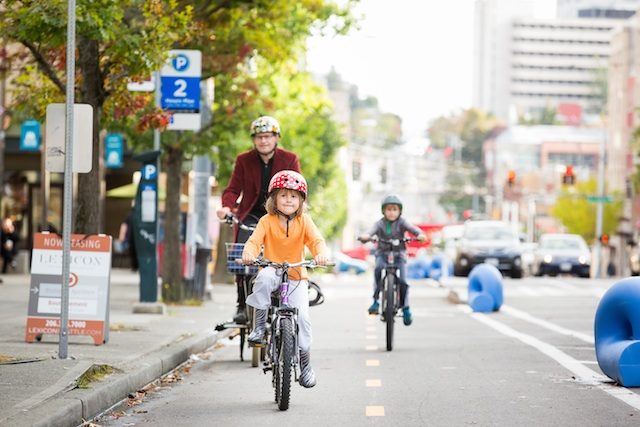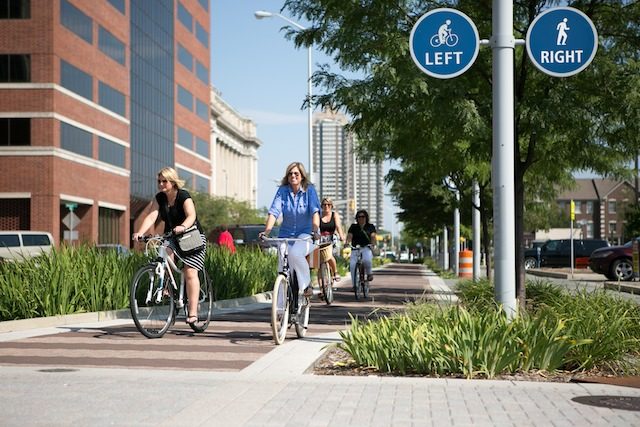SUMMARY
This is AI generated summarization, which may have errors. For context, always refer to the full article.

January was a cruel month for people on bicycles. At least 3 of them – Lorelie Melovo, Bienvenido Brabante, and Mark Anthony Ventura – died last month. They were all killed in road crashes on Metro Manila streets. (READ: ‘We could have been Lorelie’)
How fatal is two-wheeled travel in our megacity? From 2005 to 2013, 1,127 people on bicycles died in crashes. That comes out to 125 deaths per year.
This number is unacceptable, especially when compared to the number of cyclist deaths in the Swedish city of Malmö. From 2003 to 2012, only 16 people on bicycles were killed in a crash involving cars in the city.
That’s fewer than two deaths each year.
Olle Evenäs, a traffic planner for Malmö, put this down to the way the city has built its 500 kilometers of protected bicycle lanes. “We never have painted lanes as cycle tracks; we always have a dedicated surface which is separated from the car traffic by a divider and up a level from car traffic,” he said.
We need to build protected bicycle lanes now. They will keep people on bicycles alive and will make the roads safer for all of us.
Key features
Protected bike lanes have 3 key features, said PeopleForBikes.
1. Physical separation
Paint alone does not create a protected bicycle lane. It hasn’t kept people in cars from taking over the bicycle lanes in Ortigas and Marikina. Neither has paint protected the lanes in London, England or Auckland, New Zealand.
There has to be physical barriers between persons on bicycles and moving cars. Plastic posts, bollards, curbs, or planters can be used to protect the lane.
2. Exclusively for people on bikes

Protected bike lanes are solely for people on bicycles. These lanes must not be shared with people on foot or people who drive; exceptions are made for brief mixing zones where needed and at intersections.
3. On or next to the roadway
Protected bike lanes are part of the street grid. In some cases, a protected lane may be separated from the road by landscaping or other features. Still, the lane runs parallel and close to the roadway.
Safer roads for everyone
Protected bike lanes do make it safer to bike. A study team led by Christopher Monsere of Portland State University analyzed 144 hours of video for safety in this research. The team studied nearly 12,900 bicycles through the intersections of protected bike lanes in 5 major US cities. They saw no collisions or near collisions in these lanes.
In Vancouver and Toronto, streets with protected lanes saw 90% fewer injuries per mile than those with no bike infrastructure. On Bogotá’s 303-kilometer protected bike lanes, injuries related to cycling dropped by 38% in 5 years. In Montreal, streets with protected lanes saw 28% fewer injuries per mile than comparable streets with no bike infrastructure.
The benefits of protected bike lanes reach beyond people who bike. These protected lanes improve the safety of people walking and driving, too. The lanes lessen the chances of people on foot getting hit by people on bicycles. They also shorten crossing distances for people who walk. For people who drive, creating a separated place for bikes lets drivers know where to expect bicyclists.

A 2014 report from the New York City Department of Transportation showed that protected lanes brought injuries down by 25% for people in cars and 22% for people on foot. A 2011 study from the same agency showed that the lanes cut traffic crashes for all road users by 34%.
The bottom line: Protected bicycle lanes save lives. This is the lesson we in Metro Manila – indeed, in the entire country – need to learn from Malmö and many cities all over the world that have seen the wisdom of building protected lanes: Buenos Aires, Argentina; Mexico City; Seville, Spain; Copenhagen, Denmark; Paris, France; and Rio de Janeiro, Brazil.
And the list is still growing. Even Pyongyang in North Korea has protected bike lanes!
Clearly, bicycles and motor vehicles don’t mix. When push comes to shove, the person on a bicycle is only flesh and bone; the person in a car, on the other hand, is protected by an exoskeleton of steel.
Let’s call on all our public officials to #BuildProtectedBicycleLanesNow. – Rappler.com
Dinna Dayao says a big prayer each time she rides her bike in Metro Manila. She longs for the day when she can safely pedal her way through a network of protected bicycle lanes in the country.
Add a comment
How does this make you feel?
There are no comments yet. Add your comment to start the conversation.